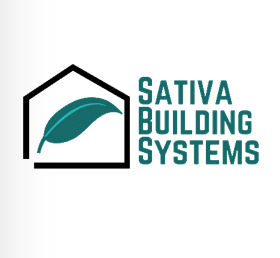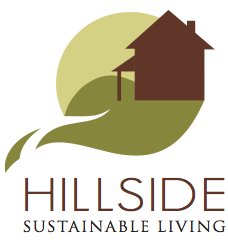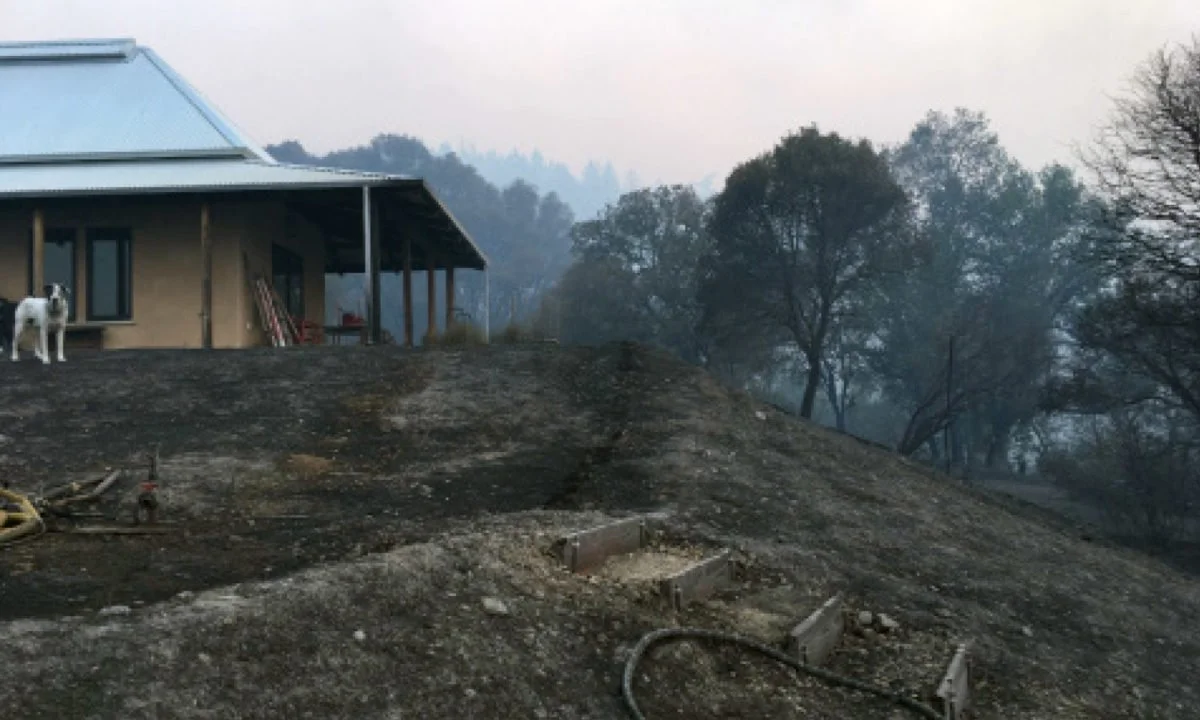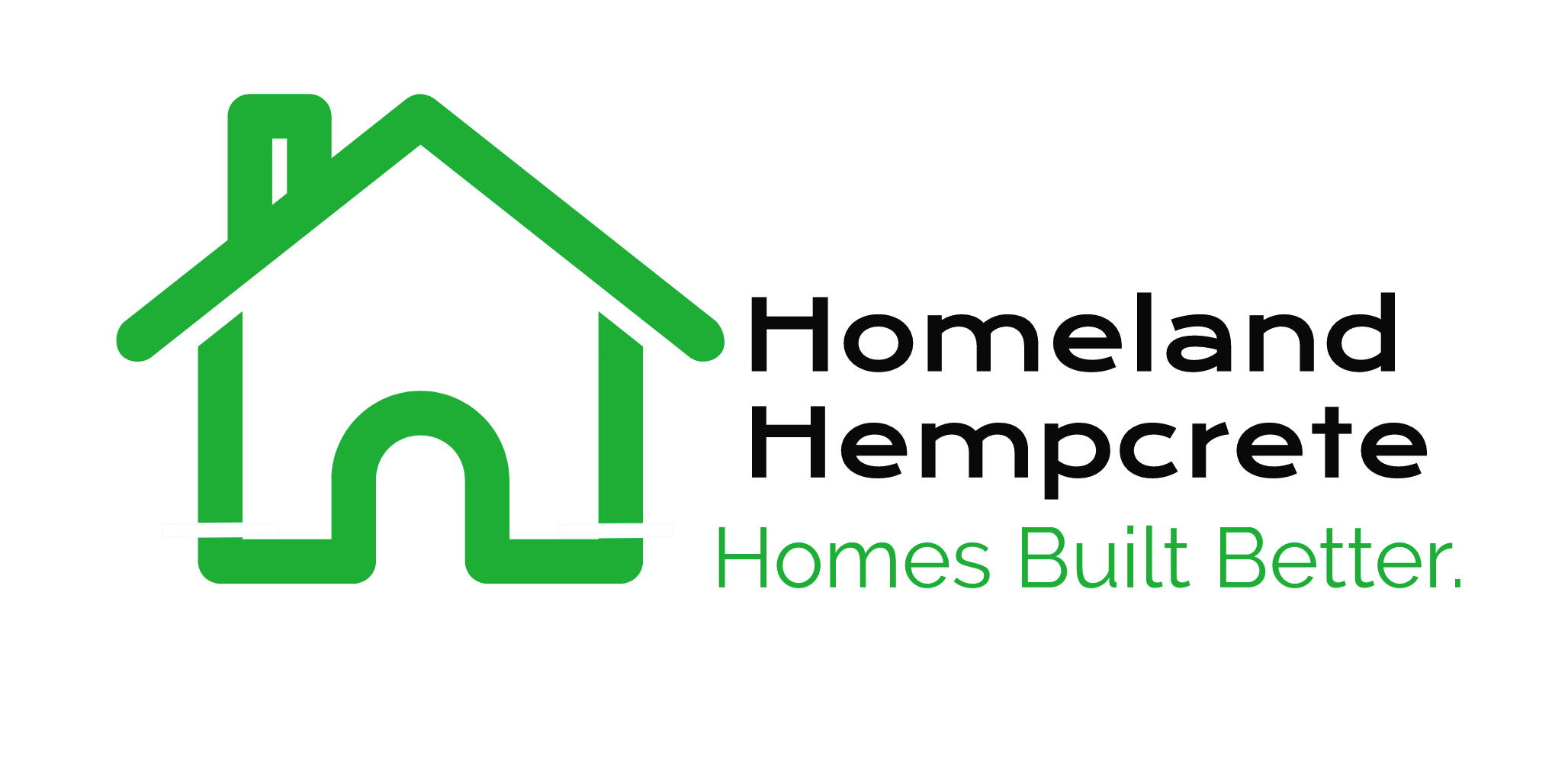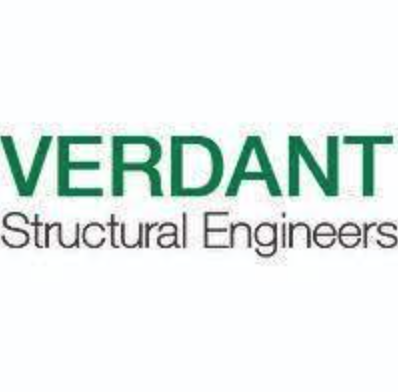Rebuilding CA With Hemp: Natural Builders Team Up for Code Reform
Palisades Fire workers attempt to stop the flames. Photo courtesy American Legion Palisades Post 283.
Rebuilding CA With Hemp: Natural Builders Team Up for Code Reform
By Elizabeth “Boo” Lunt and Jean Lotus
Homeowners returning to their burned-out homes in southern California are facing the painful consequences of the US construction industry’s reliance on cheap plastics and petroleum-based building materials: Not only are these materials easily combusted in a wildfire, but they leave behind a toxic soup that has polluted waterways and poisoned air quality.
Recognizing that these contemporary materials have failed their purpose, hemp-building advocates in California are teaming up with other natural building materials experts to try to remove barriers to rebuild with biobased building materials.
Fire danger can no longer be ignored in California and the Pacific Northwest. More than 67,000 wildfires burned 8,924,884 acres in 2024, as reported by the National Interagency Fire Center. Multiple insurance companies have fled the state or reduced homeowner coverage in response to the danger.
Two groups of natural building experts this month have gathered thousands of signatures on petitions to state building agencies to fast-track changes to the state building code to adopt natural-building materials already appearing in the 2024 International Residential Code.
Advocates are urging the state to adopt Appendix BL (Hemp-lime), Appendix AU (Cob/Monolithic Adobe) and Appendix BI (Light-Straw Clay). Natural building experts want to get these materials adopted in the California Building Codes for 2025.
“This lack of regulatory framework hinders the wider adoption of earthen construction in the state, depriving Californians of a safe, sustainable, and fire-resistant building option that also addresses climate change,” wrote architect Ben Loescher, of LA-based Loescher Meachem Architects.
“Please allow those who wish to build with healthier materials to do so,” wrote one person who signed the petition. “We are tired of living in toxic boxes. It’s time to make the move to more earth and human friendly ways to build. I want to raise my child in a healthy, non-toxic home.”
California Building Code vs National Building Codes
Natural building materials can still be approved for California projects on a case-by-case basis by asking individual building departments for an exception under the Alternative Means and Methods section of the code, but statewide adoption saves time and eliminates uncertainty, advocates say.
“Without adoption by the relevant CA State agencies, these [2024 IRC] appendices are only voluntary for local jurisdictions across the state,” Berkeley-based architect Martin Hammer, a co-drafter of the hemp-lime appendix and natural building codes expert, told HempBuildMag in an email.
Last June, the California Department of Housing and Community Development (HCD) declined to adopt the natural building appendices, although the Office of the State Fire Marshal (SFM) did adopt part of the hemp-lime appendix as an approved non-combustible material.
“The building industry is understandably resistant to change, unless new (or renewed) materials and systems offer cost savings (materials and/or labor) or increased performance or durability,” Hammer added.
“Builders (and to a lesser extent design professionals) are resistant to change because they have learned how to use a material or system and would rather continue with the known than risk working with the unknown.”
Straw Bale Homes Survived NoCal Wildfires
Fire victims in southern California are learning the lessons that northern Californians learned in wildfires in 2017 and 2018. Since then, California’s strict building codes and a 2021 IRC special code for building in wildfire zones have created stronger rules for building — and rebuilding.
There are not many hempcrete homes in California yet. But when it comes to surviving wildfires, hemp-lime advocates point to straw bale construction, which was approved in US building codes in 2015 and adopted into California state building codes in 2019.
David Arkin, another Berkeley-based architect, designed multiple natural homes with lime plaster that proved fire-resistant in the 2017 North Bay wildfires, remaining standing while all the homes around them burned down. One example was a home ”directly in the line of fire,” according to an Arkin-Tilt company report that was later publicized in Fine Home Building magazine. The homeowner, who had tried to evacuate, ended up inside the home as the fire approached. The house, built of straw bale, earth, and lime plaster, “held them safe until dawn.” Everything surrounding the house burned to the ground, including outbuildings and all the trees. “We posit that the metal roof, strawbale walls, wrap-around porch supported by fire-salvaged redwood posts, and ample defensible space all contributed in saving the house, and possibly lives,” the article concludes.
“In nearly every California wildfire one finds examples of homes of earth and straw surviving where nearby homes of other materials burned," Arkin told HempbuildMag in an email.
Clients Seek Fire Resistance
Some NoCal residents have chosen to rebuild with natural materials, even when it involved a more complicated process.
“Fire resistance is a priority for our clients, especially in high fire-risk zones,” said Berkeley-based engineer Anthony Dente, PE of Verdant Structural Engineers. Dente has worked on hundreds of natural building projects. But he added, “Fire safety comes as much from urban wildlife interface design practices and halting global warming as it does from wall, insulation, or roof framing material choice.”
Aaron Grail, a Sebastopol, CA-based natural builder certified to build with hemp-lime, told HempBuildMag: “For a client looking to rebuild after a fire, hemp-lime is a smart choice. It’s not just about fire resistance—it’s about rebuilding in a way that prioritizes health, durability, and resilience. Hempcrete doesn’t burn; it chars and protects the structural frame. Beyond that, it regulates humidity, improves indoor air quality, and provides exceptional thermal performance, reducing energy costs in the long run. It’s an investment in both safety and comfort.”
A hempcrete wall assembly after passing the ASTM E119 one-hour fire rating. Photo courtesy of Americhanvre Cast Hemp.
Fire Resistance of Hemp Lime
Hempcrete, (or hemp-lime insulation) is fire resistant because of the lime in the mixture. The combination of hemp, lime and water cures after about six weeks into a stone-like material that regulates temperature and humidity when used as a “monolithic” insulation envelope in wall assemblies.
Although hemp-lime has been approved as fire-resistant for 30 years in Europe, US companies have undergone fire testing in an effort to expand the number of jurisdictions that will accept the material for building.
Cameron McIntosh of Americhanvre in Pennsylvania, tested hemp-lime wall panels last year as part of a US Army $1.9 Million Phase II SBIR grant. McIntosh said it was “breathtaking” to watch the results of the one-hour fire test performed on panels heated to 1,700 Fahrenheit as part of the ASTM E-119 fire resistance testing.
“[The face of the panel] never rose a single degree above ambient temperature, despite the intense heat on the other side,” McIntosh went on to say, noting that the results will have a “positive impact for the entire industry.”
Karen Rugg of Sisters, OR-based Perennial Building, received approval in 2024 from their local building department to pursue building a mixed-use building in downtown Sisters after completing a small-scale ASTM E-119 fire test.
Rugg explained that the panel they built for testing was cured and plastered before testing by exposure to a furnace blast of 1,200 degrees fahrenheit for an hour.
“We watched the computer the entire time, and those temperature sensors did not raise above ambient. There was no heat getting to the back side of the wall,” Rugg. “When the fire protection engineer saw that, he said ‘you guys are golden,’” Rugg said.
Rebuilding with Hemp-Lime in California
In spite of the lack of statewide adoption in building codes, California hemp-lime builder Grail sees other signs that natural building materials like hemp-lime will become more popular. Hemp-lime’s fire resistance and hemp’s natural carbon sequestration will clearly be a better choice than plastic/petroleum-based building materials, he believes.
“Better recognition by insurance underwriters could lower premiums for homeowners rebuilding with hemp-lime,” he suggested. Also, “emerging frameworks such as embodied carbon accounting are starting to serve as compliance tools for new construction, providing additional incentives to adopt low-carbon materials like hemp-lime – making it an even more compelling choice.”
Lisa Sundberg, founder of the Indigenous Habitat Institute, believes the time is right for her organization’s hempcrete panel factory in Trinidad in Humboldt County. The group just got approval for a permitted hempcrete ADU in Eureka, CA.
“Catastrophic wild fires keep happening in California followed by skyrocketing housing insurance causing people to lose their homes and the mass exodus of insurance companies leaving our state,” she wrote.
“Now with the Palisades and Eaton wildfires I feel we are finally at a fever pitch and a pivotal moment in history that has government agencies, developers and home owners searching for real building solutions and the ways we build communities….Hempcrete is a powerful contender as a carbon negative building material moving forward. Once you know what it can do, you can’t un-know it,” she said.
“Biobased materials can no longer be overlooked.”
Please Support Our Classified Advertisers
(To find out more about advertising CLICK HERE).
Publications
Green Builders
Build your hempcrete dream house in Austin, TX with Gradek Contracting and Design
High Desert Hemp Homes - Building with hemp in the Rocky Mountains
Experienced Natural Building Engineering Services from Verdant Structural Engineers, CA
Naturalia Construction, Colorado-based Sustainable Construction with Hemp
Aaron Grail Construction, No. Cal: The intersection of art, design and performance
Hemp Building Research and Training
Hemp Build School online and IRL for Homeowners and Professionals
Follow the Hemp Casita to learn more about building with hemp.
Hemp Hurd (shivs)/Hemp Fiber/ Hemp Microfiber
CannaVision, Fort Worth, TX: Home of the Pulsewave Hemp Processor
IND HEMP: Supporting Farm Families and Rural Communities with Natural Materials Processing
Wyoming Hemp Company - Industry-leading industrial hemp suppliers
Aggricrete, TX, Natural Materials with Superior Sustainability
Hempcrete installers/Insulation subcontractors
Americhanvre Cast Hemp: Supplies, Equipment, Experienced Hempcrete Installation
Hemp Build Network: We Make Building with Hemp Possible, New Braunfels, TX
Hemp Building Company: Hempcrete installation, supplies Lafayette, CO
Hemp Batt Insulation/Supplies
Lime Binder
Hemp Wall Panel Products
Preorder your hempcrete tiny house from Sativa Building Systems
Panel solutions from Homeland Hempcrete
Hemp Composite Boards
Bison Biocomposites produces sustainable thermal insulation, hempcrete, hemp hurd, and more.
Hemp Blocks





